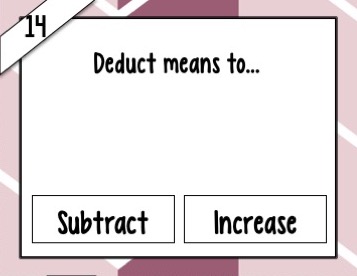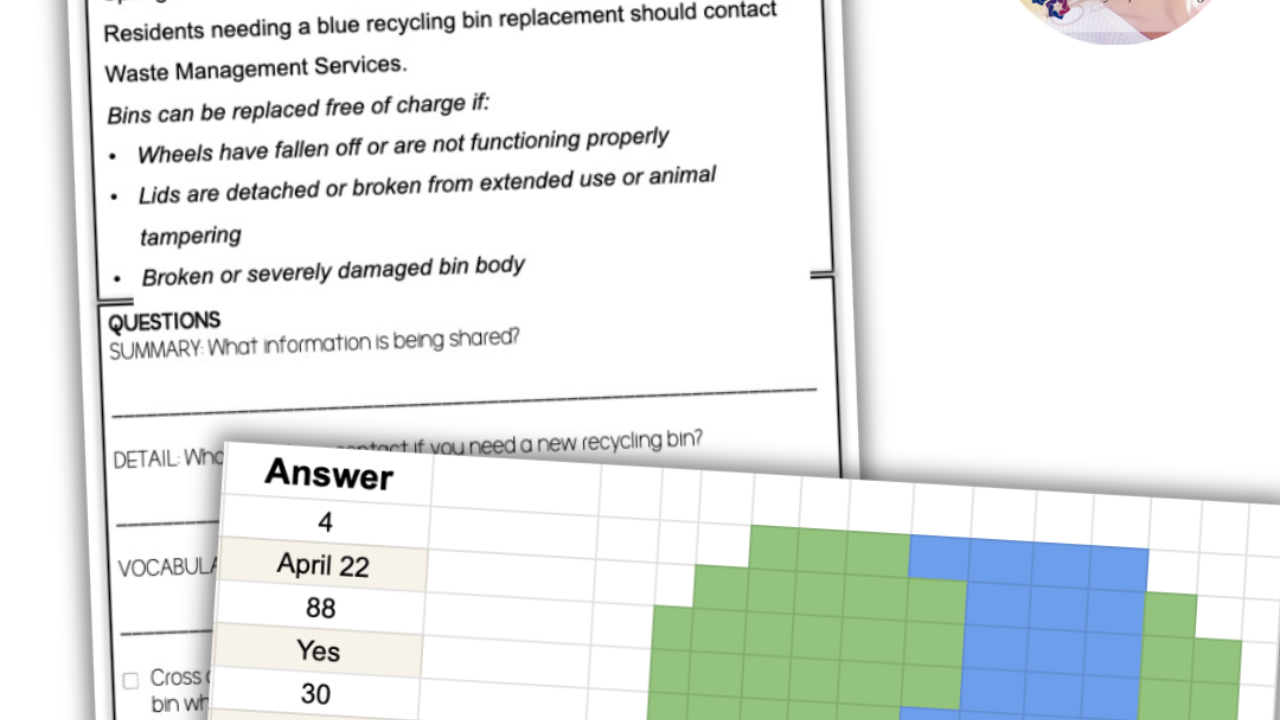How to Teach about Income Tax
Sep 26, 2020
Our fifth topic of the Consumer Math Blog Series is about how to teach Income Tax. Read more about why and how you can teach Income Tax using my Income Tax Lesson Unit (click here to get your copy).
Learn about your students Consumer Math habits with this FREE rosource!
Purpose of Teaching Income Tax
It’s a part of life that can’t be denied, income tax (unless you live in one of those 6 states). We have no control over it and it’s something that is rarely talked about with students until they have their first job and have that first paycheck in their hand. Then they really wonder who FICO is and why they took so much of their hard earned money! Bringing this concept into the classroom will help them to feel less shocked when they get that first paycheck or direct deposit.
Income Tax Lesson Unit
Key-Must-Teach Concepts
Net Pay- It’s the money that actually matters because it is the cold, hard cash value you deposit in the bank.
Gross Pay- It’s the big fluffy number that shows how much you earned, but not what you got paid. Gross doesn’t mean yucky, it means big!
Lesson Objective
Calculate the net pay after income tax is taken out using an electronic
calculator/website.
Lesson Unit Break Down
Day 1- Like I mention below, this topic is going to be rather new for most of your students, so giving them a little taste before day 1 might serve everyone well. Give them the Reading passage as homework before day 1 and then revisit it on day 1. Follow up with the writing prompts, T/F questions, the visual flow chart, and the brain teaser.
Day 2- Cover the basics. The traditional Notes page will let you start to put this into ‘regular’ language or more ‘student friendly’ language. Be ready to explain, revisit, explain more, and then show your true artifacts. If your state/area is looking to increase taxes, show that article and talk about why this is something that will affect you as an adult. If you have extra time, consider using the Task Cards on this day (see the ideas below).
Day 3- Dive deeper into the concept with the Parts worksheet. Then, transition into the Income Tax Application worksheet. This will be the first time students will get to ‘calculate’ the net pay for a worker. I think you’ll find some students to be shocked by the results of their calculations!
Tip- Students will need internet access for this activity!
Day 4- Using the same website as Day 3, students will continue to calculate the actual net pay of a paycheck. They are given an hourly wage, number of hours, are asked to calculate the gross pay and then use the website to calculate the net pay.
Day 5- Rinse and repeat with the task cards (see idea below). Use the remaining time for the 5 question assessment, the word search (or give that as fun homework), and then the functional math review.
Income Tax Lesson Unit
Reading Passage Option
Give the reading passage as homework to read and then re-visit it at the start of Day 1 of class. Emphasis the Net pay, emphasize the Gross pay, emphasize the fact that this ‘tax’ makes other things ‘free.’ This may be a great time to have students make notes in the margin, like they might do in English class. They can use words or draw a visual, either way, keep reinforcing those three key points. After that, complete the writing prompts and T/F questions.
Listen & Learn
A Listen & Learn is a short, 5 sentence PowerPoint/Google presentation that introduces the topic using visuals and audio. Ideal for non-readers! Read about what they are and how they might be right for your classroom here.
Task Card Ideas
I would recommend double dipping on these cards for this lesson unit. Use them twice, the review will be worth it! Income tax is still so new to them (even after a week of instruction), so let their brains keep things fresh and review twice.
1st time- May I recommend the tried and true Around the Room method- where you cut out every card, tape it to different places around the room, and students work in their own order and at their own pace.
2nd time- I would follow that up with a game style review. Keeping Secrets is a great option! Place all cards in a large manilla envelope with 1 dry erase marker, divide up class into small groups (3-4 ideally) and then give each group a packet. Mark the right answer with the dry erase and then put all the cards back in the envelope. The key is to work quietly, so others don’t overhear. After a set amount of time has passed, have the groups return the envelope to you. Check the answers and the team with the most right answers wins!
Tip- Copy 1 set of task cards for each small group and make sure they are laminated!
Further Practice Ideas
I’m sure you had a student (or will one day) throw a question out like, “what if you….” Well, now there is a follow-up activity to their questions. This website (below) will let you compare two scenarios at the same time. A good starting point would be to compare the income of two different jobs that work the same number of hours, such as one at minimum wage and one that is $1.00 more per hour.
Ultimate Goal of the Lesson Unit
The ultimate goal is for students to come away understanding that their Net pay (what they actually see on their paycheck) is a smaller amount than their Gross pay (what they earned before taxes).
Income Tax Lesson Unit
May I Also Suggest Teaching
Before teaching Income Tax, use this Income Lesson Unit. After covering Income Tax (and I hope this seems rather obvious), teach Filing Taxes Lesson Unit!
















